Manage Stacks
Manage Stacks allows the stack developer to create, update, and delete stacks.
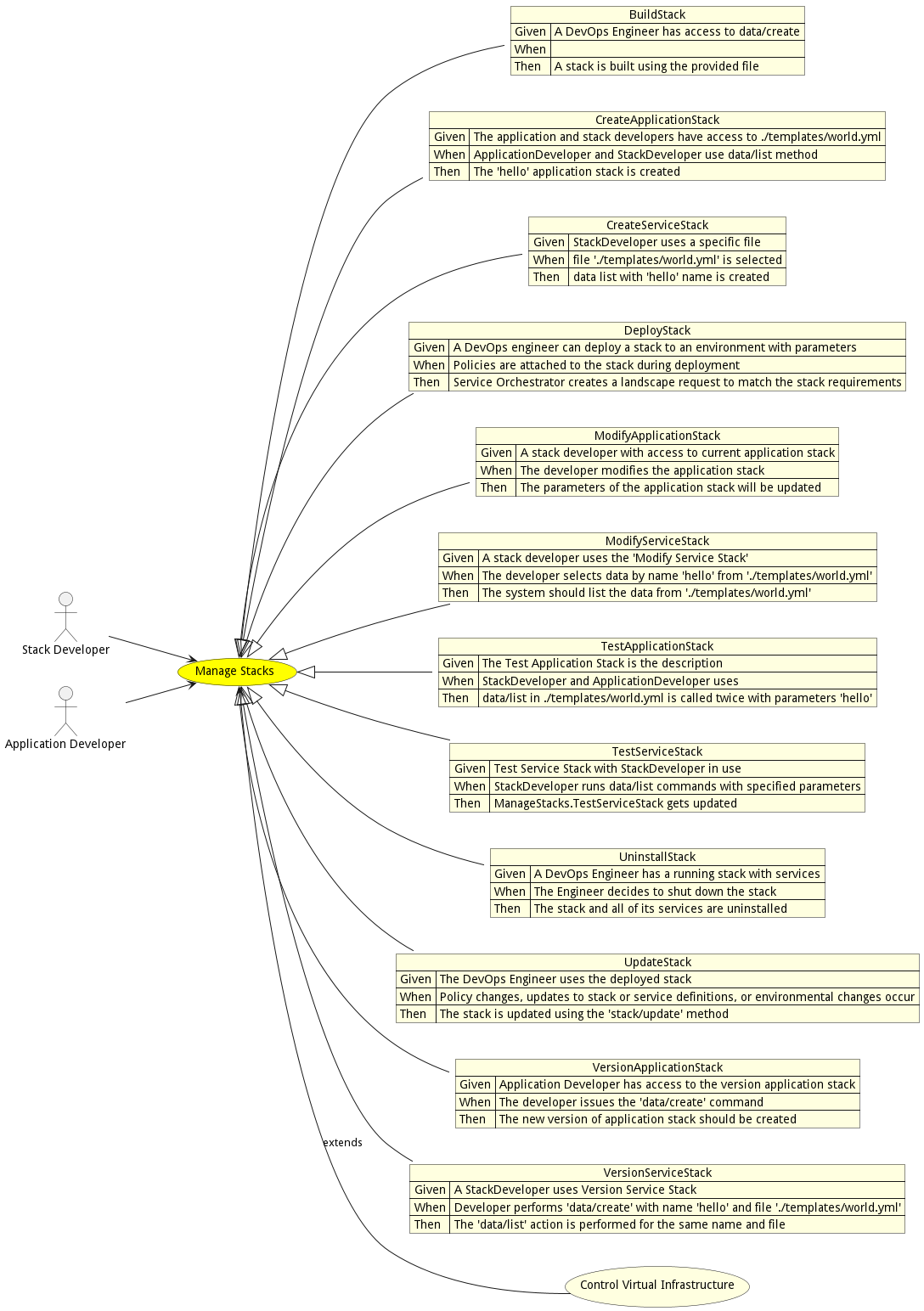
Actors
Extends Use Cases
Detail Scenarios
- BuildStack
- CreateApplicationStack
- CreateServiceStack
- DeployStack
- ModifyApplicationStack
- ModifyServiceStack
- TestApplicationStack
- TestServiceStack
- UninstallStack
- UpdateStack
- VersionApplicationStack
- VersionServiceStack
Scenario Build Stack
Build Stack is the description

Criteria
- Given - A DevOps Engineer has access to data/create
- When -
- Then - A DevOps Engineer has access to data/create
Steps
Actors
Scenario Create Application Stack
Create Application Stack is the description
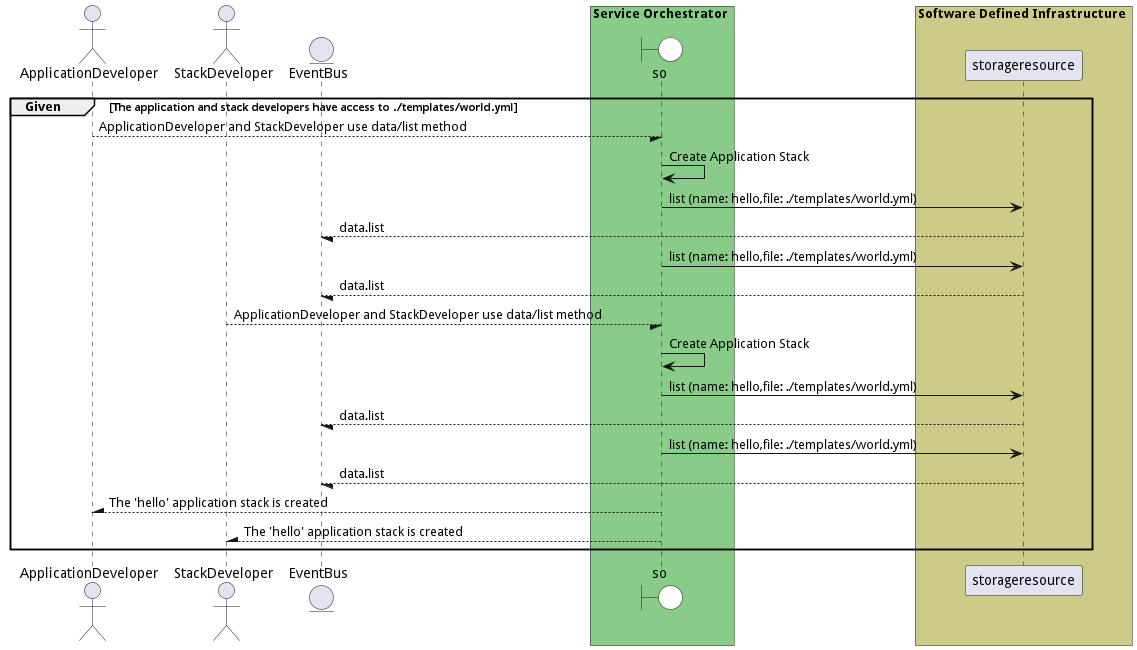
Criteria
- Given - The application and stack developers have access to ./templates/world.yml
- When - ApplicationDeveloper and StackDeveloper use data/list method
- Then - The application and stack developers have access to ./templates/world.yml
Steps
Actors
Scenario Create Service Stack
Create Service Stack is the description

Criteria
- Given - StackDeveloper uses a specific file
- When - file './templates/world.yml' is selected
- Then - StackDeveloper uses a specific file
Steps
Actors
Scenario Deploy Stack
Deploy Stack allows a devops engineer to deploy a stack to an environment. Parameters can be passed during the deployment of the stack to the environment. Policies are attached to the stack during deployment and the stack is Service Orchestrator creates a landscape request to match the request of deploying the stack requirements.
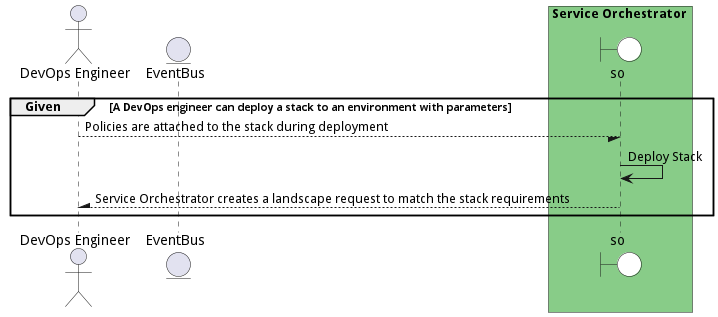
Criteria
- Given - A DevOps engineer can deploy a stack to an environment with parameters
- When - Policies are attached to the stack during deployment
- Then - A DevOps engineer can deploy a stack to an environment with parameters
Steps
- To Be Defined
Actors
Scenario Modify Application Stack
Modify Application Stack is the description

Criteria
- Given - A stack developer with access to current application stack
- When - The developer modifies the application stack
- Then - A stack developer with access to current application stack
Steps
Actors
Scenario Modify Service Stack
Modify Service Stack is the description

Criteria
- Given - A stack developer uses the 'Modify Service Stack'
- When - The developer selects data by name 'hello' from './templates/world.yml'
- Then - A stack developer uses the 'Modify Service Stack'
Steps
Actors
Scenario Test Application Stack
Test Application Stack is the description
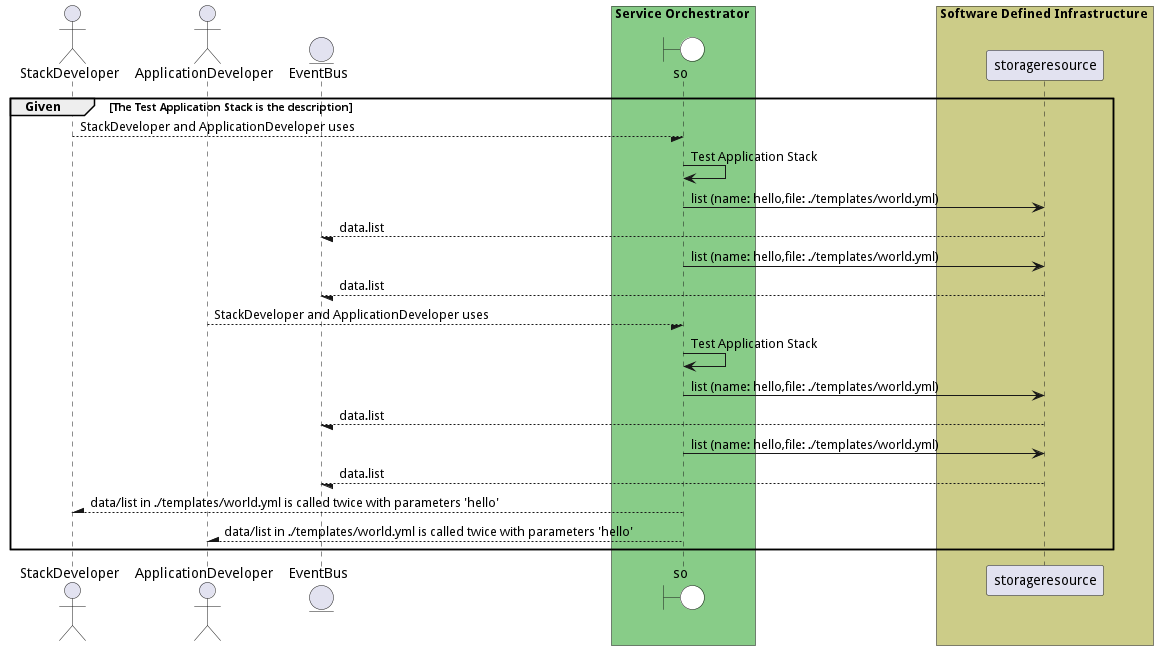
Criteria
- Given - The Test Application Stack is the description
- When - StackDeveloper and ApplicationDeveloper uses
- Then - The Test Application Stack is the description
Steps
Actors
Scenario Test Service Stack
Test Service Stack is the description
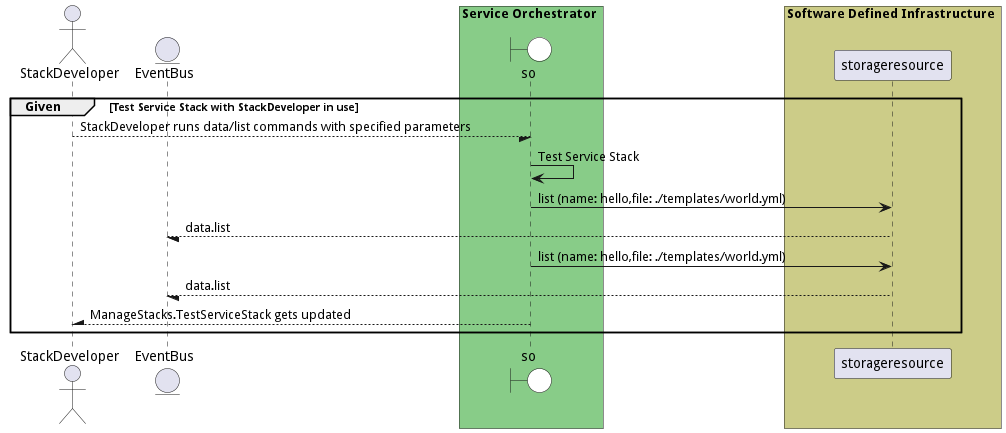
Criteria
- Given - Test Service Stack with StackDeveloper in use
- When - StackDeveloper runs data/list commands with specified parameters
- Then - Test Service Stack with StackDeveloper in use
Steps
Actors
Scenario Uninstall Stack
Uninstall Stack shuts down the stack and all of its services.

Criteria
- Given - A DevOps Engineer has a running stack with services
- When - The Engineer decides to shut down the stack
- Then - A DevOps Engineer has a running stack with services
Steps
- To Be Defined
Actors
Scenario Update Stack
Update Stack allows the DevOps Engineer to update the stack after it has been deployed. This can include policies changes in the environment, updates to the stack definition, service definitions, or environmental changes.
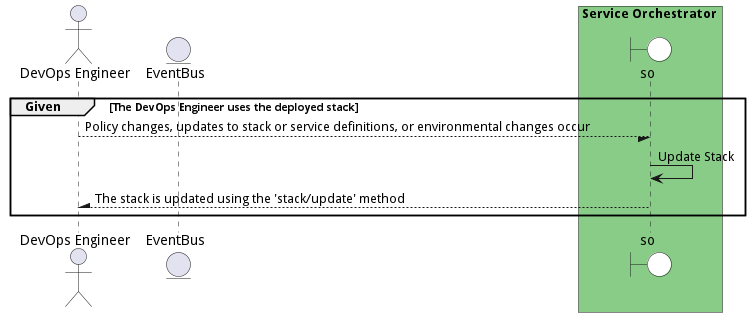
Criteria
- Given - The DevOps Engineer uses the deployed stack
- When - Policy changes, updates to stack or service definitions, or environmental changes occur
- Then - The DevOps Engineer uses the deployed stack
Steps
- To Be Defined
Actors
Scenario Version Application Stack
Version Application Stack is the description
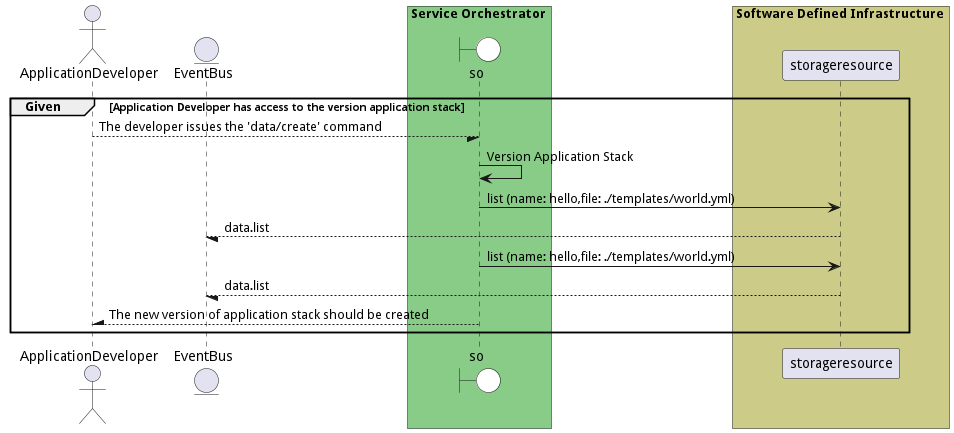
Criteria
- Given - Application Developer has access to the version application stack
- When - The developer issues the 'data/create' command
- Then - Application Developer has access to the version application stack
Steps
Actors
Scenario Version Service Stack
Version Service Stack is the description
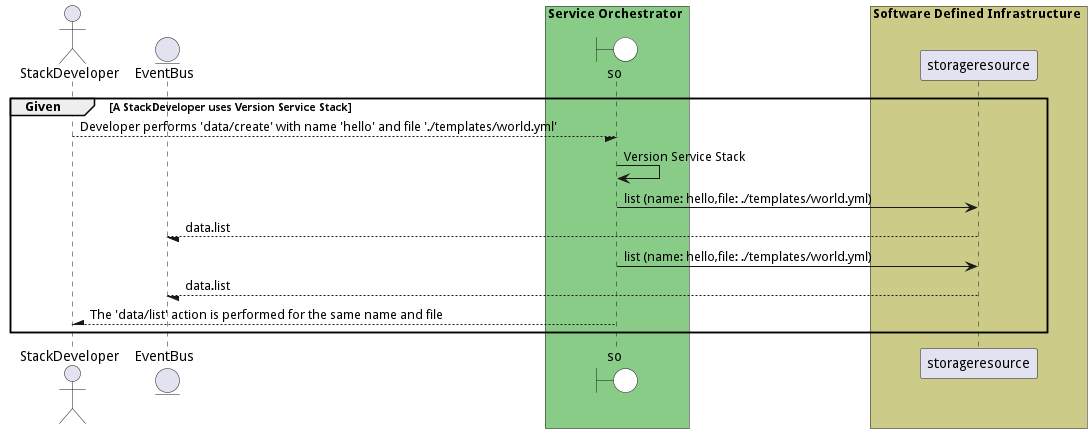
Criteria
- Given - A StackDeveloper uses Version Service Stack
- When - Developer performs 'data/create' with name 'hello' and file './templates/world.yml'
- Then - A StackDeveloper uses Version Service Stack